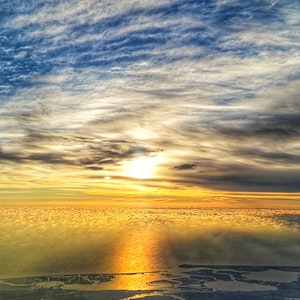
Integrating Traditional Knowledge and Ecological Research to Guide Fisheries Management
Research Location:
Implemented: Virginia, USA
Conservation Partner:
Smithsonian Working Lands and Seascapes Program
Student Researcher (2024)
Elena McCullough, Major: Integrative Conservation
Student Researcher (2024)
Luke Sahli, Major: Integrative ConservationStudent Researcher (2023)
Emily Johnson, Major: Anthropology, Major: Environment and SustainabilityStudent Researcher (2022)
Malvika Shrimali, Major: Environmental Science, Major: Hispanic StudiesFaculty Mentor
Dr. Mara DicentaProject Description
In collaboration with the Smithsonian’s Working Land and Seascapes Program, W&M students are working with local fisher communities to explore current and historic habitat use of river herring and to document oral histories and traditional ecological knowledge needed to understand and protect river herring, their watershed habitats, and their importance to local communities.
River herring provides important cultural, economic, and ecological resources in the Rappahannock River Watershed, but their numbers have declined by over 90% due to overfishing, construction of dams, and other impacts. Today, increasing interest in restoring river herring populations is sparked by the removal of Embrey Dam, which made the Rappahannock the longest free-flowing river in the Chesapeake Bay Watershed. However, there is a lack of detailed information on historical conditions, fisheries, cultural values, and ecosystem services needed to ensure conservation planning considers the perspectives and knowledge of the local communities and aligns with their goals.
An ongoing collaboration between W&M and Smithsonian's Working Land and Seascapes Program, Luke Sahli '26 and Elena McCullough '25 will collect oral histories and other historical information from local communities to build informed cultural and economic baselines for river herring in the Rappahannock River as a basis for developing restoration goals.
Project ID - Format
22-013-22 - CRP Year
22-013-23 - CRP Year
22-013-24 - CRP Year














